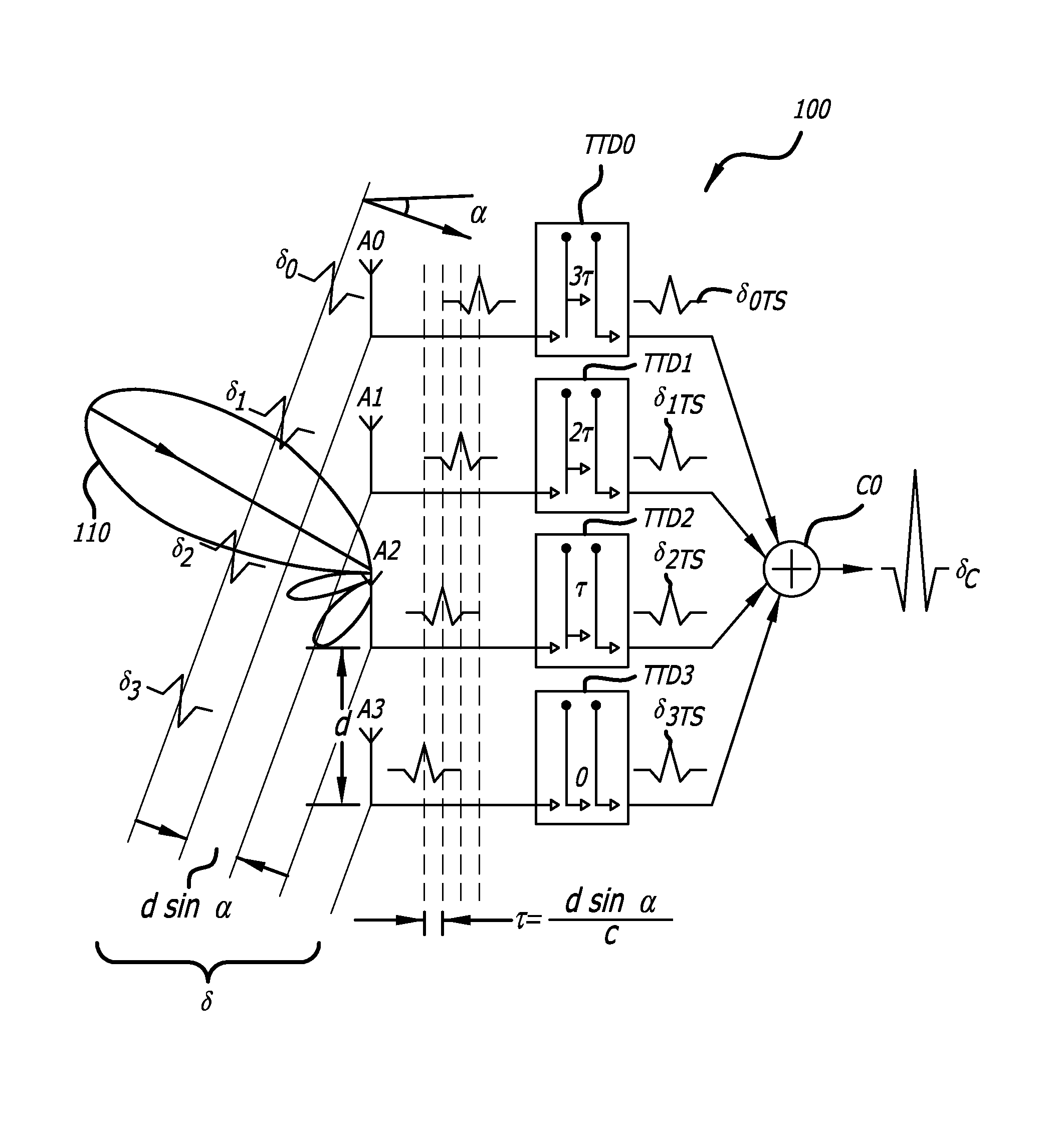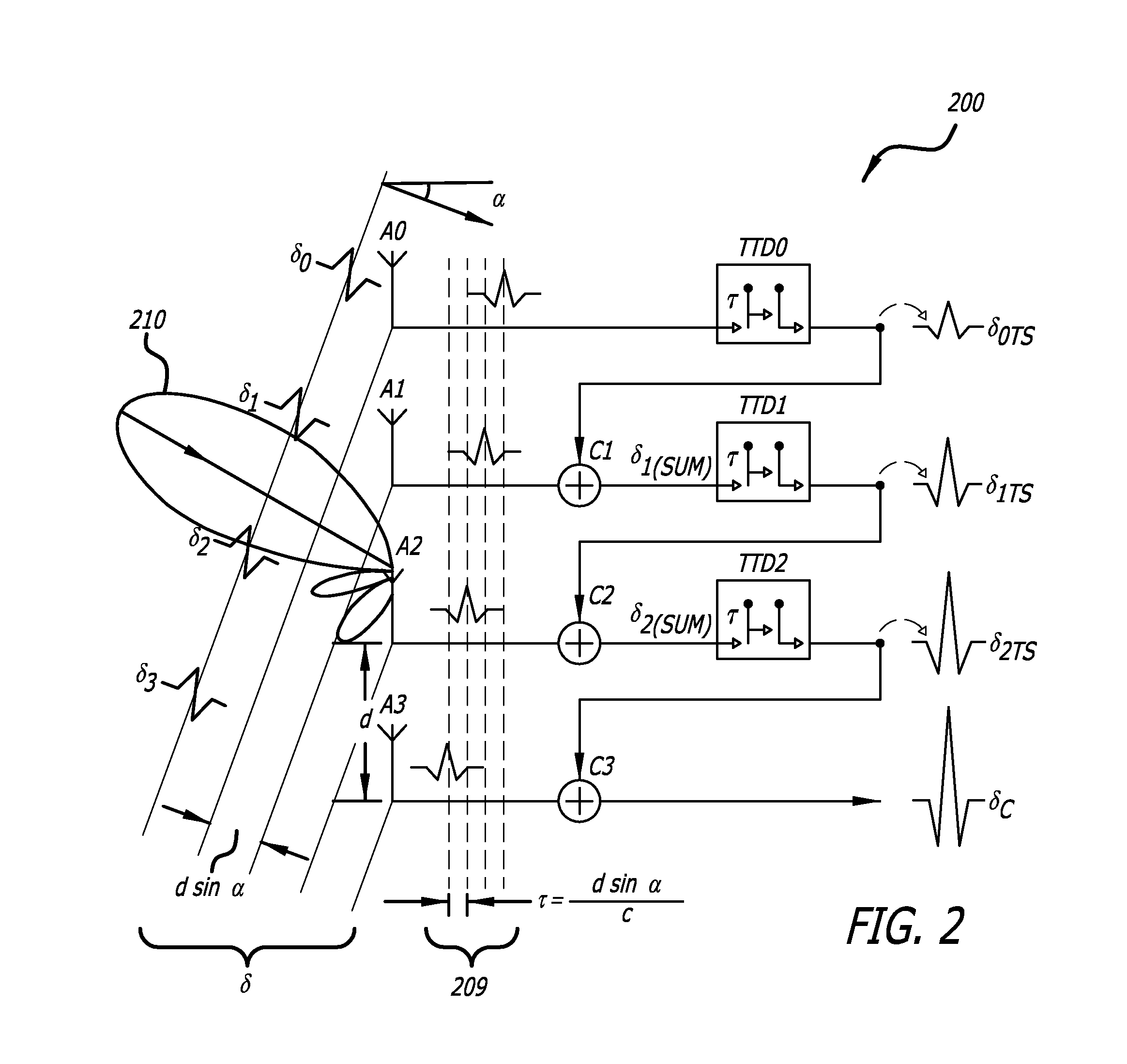Path-Sharing Transceiver Architecture for Antenna Arrays
a transceiver and path-sharing technology, applied in the field of wireless signal processing, can solve the problems of consuming an excess amount of power, requiring an impractically large amount of semiconductor space, and consuming a large amount of power
- Summary
- Abstract
- Description
- Claims
- Application Information
AI Technical Summary
Benefits of technology
Problems solved by technology
Method used
Image
Examples
Embodiment Construction
[0041]In UWB antenna arrays, the incident pulse reaches different antenna elements at different times as a function of the incident angle. The time delay difference between the signal on two adjacent antenna elements, τ, is a function of antenna spacing d and the incident angle α in accordance with the following relationship:
τ=dsin(α)c(1.1)
[0042]where c is the velocity of light. In a UWB imaging system, the time difference as quantified by equation (1.1) may be compensated by using a variable true time delay element in each channel to time shift earlier arriving signals and thereby align the signals for coherent addition.
[0043]For purposes of this disclosure:
[0044]One channel is adjacent to another when then antennas to which the channels are coupled are spatially adjacent. Thus, in FIG. 1, A1 is adjacent to A0, A2 is adjacent to A1, and A3 is adjacent to A3.
[0045]The phrase “coupled to” is not intended to convey that a direct coupling is required.
[0046]The phrase “shifted signal” m...
PUM
 Login to View More
Login to View More Abstract
Description
Claims
Application Information
 Login to View More
Login to View More - R&D
- Intellectual Property
- Life Sciences
- Materials
- Tech Scout
- Unparalleled Data Quality
- Higher Quality Content
- 60% Fewer Hallucinations
Browse by: Latest US Patents, China's latest patents, Technical Efficacy Thesaurus, Application Domain, Technology Topic, Popular Technical Reports.
© 2025 PatSnap. All rights reserved.Legal|Privacy policy|Modern Slavery Act Transparency Statement|Sitemap|About US| Contact US: help@patsnap.com



